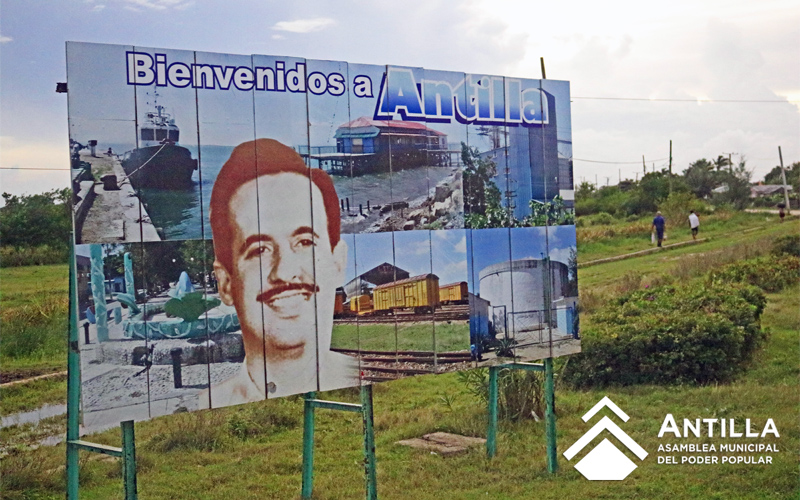
The territory of the current municipality of Antilla has a long and interesting history, located on the margins of the largest pocket bay in the world, Nipe Bay, and Banes Bay, its history is linked to these two geographical features. The first sighting of the Antilla territory appears in Christopher Columbus' logbook on Tuesday, November 13, 1492, during his first voyage, where he describes the lands of Nipe and Cristal.
The aborigines were the first settlers of this territory. In Loma del Júcaro are the remains of a village inhabited between 1222 and 1402 A.D., according to a two-sigma calibration of a radiocarbon date of 690 years before the present. Also located there is a cave where indigenous pottery farmers conducted burials and ceremonial activities.
The first landowners in Antilla have their origin in the royal estate of Nipe and Salinas, owned in 1783 by Diego de la Torre Hechavarría and Francisco Javier Guerrero. Subsequently, the property was broken down and in 1819, Joaquín Guerrero sold his share in the possession to Silvestre Domínguez for 300 pesos.
Around 1830 the property was acquired by Guillermo Gesti, founding the hacienda of El Júcaro and "El Ramón", which by 1842 had three cattle ranches, one tended by Guillermo, one by his son Carlos and the third leased to Joaquín Rodríguez. In 1866 the owner of El Ramón was Julián Gesti, exploiting the strength of three slaves.
After the end of the war of 1895, between 1898-99, the French citizen Don Hipólito, resident in Puerto Plata, Dominican Republic, came to Cuba and acquired land in the Punta Corojal plot (first name given to Antilla), calculating an area of eight caballerías.
The existence of a territorial and urban organization of the territory arises at the beginning of the 20th century, precisely from 1902 where the genesis of the current urban center as an Antillean village begins. At the end of that year, the engineers of the Cuba Railroad Company, Reed and Shoop, began work to build a branch line from Alto Cedro to Punta de Corojal. More than two years were spent in the work of excavations, embankments, construction of bridges and culverts, laying rails until on February 22, 1905, at 3:50 pm a sharp steam whistle announced that the railroad had been extended to this point.
This resulted in the creation of the town of Antilla, which William Van Horne, founder of the locality, laid out and founded.
The urban fabric of the current municipal seat remained unchanged until the first half of the 1960s, when it began a construction process associated with the effects of Cyclone Flora.
Since 1975 it is the smallest municipality of the country and it is located to the center and north of Holguin province, 80.7Km from the provincial capital being delimited to the north with the municipality of Banes, the bay of Banes and the Atlantic Ocean, to the south with the Nipe had, and the municipality of Mayari, to the east by the Atlantic Ocean and to the west with the municipalities of Báguanos and Rafael Freyre. It has a territorial extension of 302.82 km2, after being ceded on July 1, 2022, 183.03 km. Currently the territory has 7 popular councils and 50 districts.
FUNDAMENTAL ECONOMIC ACTIVITIES.
The municipality of Antilla has an agricultural sector with one agricultural UEB, one CCS and one UBPC, in addition to an urban organoponic. In the industrial sector, there are 5 of the 20 branches that govern industrial policy in Cuba: fuel, forestry, construction, food and textile, with the leading activity being the food industry with the Comandante Daniel corn mill.
In the service sector in the urban settlement there are 3 bakeries, a candy store and a processing center. There are transportation facilities, consisting of a Mixed Base (bus-cargo) and the company Navegación Caribe, located on the coast of the port, with a service of docking, undocking, towing, salvage of any naval means and passenger transportation. It has facilities for the storage of general cargo, with a capacity of 21,000 tons, destined for different branches of the economy.
It has resources with potential for tourist use, which is given in the development of sun and beach activities, nautical-diving, tourism associated with golf, health, nature, adventure, rural and historical-cultural and city tourism. The support base has already been built, the first Tesoro del Atlántico hotel and other infrastructures that are in process for the tourist development of the Ramón de Antilla area.



- You should not use obscene or offensive words.
- Comments should be related to the topic.
- Comments that violate previous policies will not be posted.